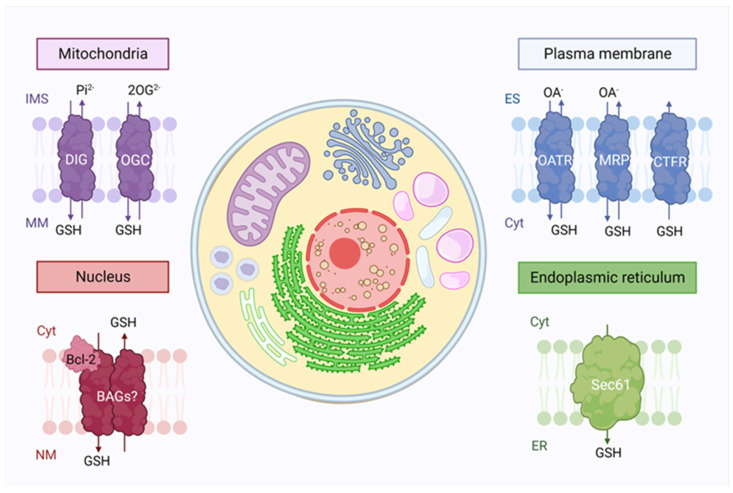Figure 2.
Glutathione intracellular compartmentalization. Glutathione synthesis takes place only in the cytosol (cyt), but it is distributed to many organelles due to the presence of transporters. In mitochondria, the outer membrane contains a large amount of porins, which allow glutathione transport, while dicarboxylate (DIG) and the oxoglutarate (OGC) transporters are present in the inner membrane. In the nucleus, Bcl-2 proteins are believed to be involved in the GSH translocation through Bcl2-associated athanogene pores (BAG). Glutathione is also found in the endoplasmic reticulum (ER), where its facilitated diffusion occurs through the Sec61 protein-conducting channel. Finally, the exchange between extracellular and intracellular glutathione in the plasma membrane occurs through the functioning of three families of transporters: the organic-anion-transporting polypeptide (OATR), the drug resistance-associated proteins (MRP) and cystic fibrosis transmembrane conductance regulator (CTRF). IMS: Intermembrane space, MM: Mitochondrial matrix, NM: Nuclear matrix, ES: Extracellular space.

